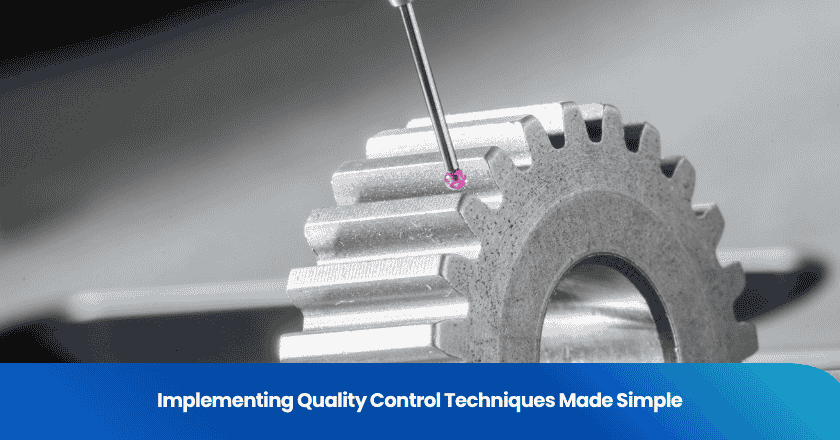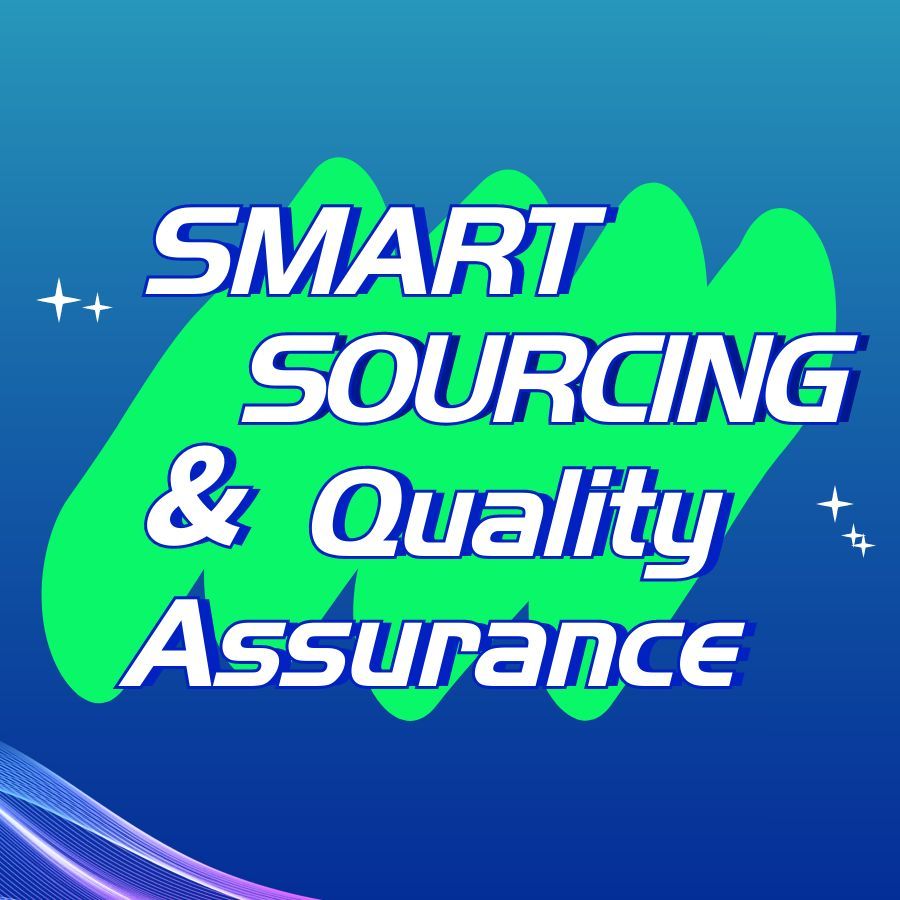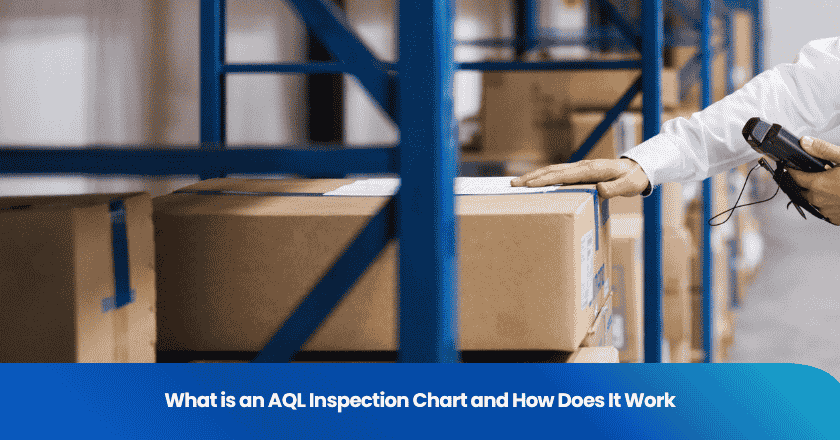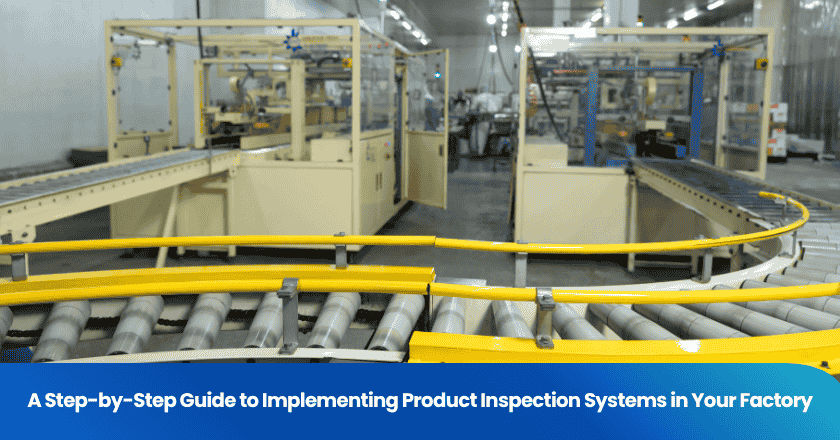
You can implement quality control techniques in your organization with confidence. Adopting a step-by-step implementation helps you achieve better results and maintain clarity throughout the process. With the right mindset, you make quality control accessible and successful for your team.
Key Takeaways
- Implement quality control techniques step-by-step to improve product quality and customer satisfaction.
- Set clear, measurable objectives using the SMART criteria to guide your quality control efforts.
- Engage your team in training and decision-making to foster a culture of quality and continuous improvement.
- Regularly monitor and review your quality control processes to identify issues early and take corrective actions.
- Document quality control procedures clearly to ensure consistency and compliance across your organization.
Quality Control Techniques Overview
What Is Quality Control?
You use quality control to ensure your products or services meet specific standards. This process involves checking, measuring, and improving outputs at every stage. You can define quality control by its key components:
| Component | Description |
|---|---|
| Defined Standards | Establish clear and measurable benchmarks tailored to your industry. |
| Inspection Protocols | Set up consistent inspection points to catch defects before they reach customers. |
| Employee Training | Equip your team with the skills and knowledge needed for effective quality control. |
| Documentation and Reporting | Keep accurate records and use digital systems for real-time tracking and compliance. |
You can choose from several quality control techniques to fit your needs. The most commonly used methods include:
- Six Sigma
- Lean Manufacturing
- Kaizen
Six Sigma helps you reduce defects and manage variations. Lean Manufacturing focuses on eliminating waste and improving product quality. Kaizen encourages you to make continuous improvements in your processes. You might also use 100% Inspection, which checks every product, or Statistical Process Control (SPC), which uses data to monitor and control your processes in real time. Total Quality Management (TQM) involves everyone in your organization, making quality a shared responsibility.
Tip: Lean Manufacturing streamlines production and adds quality checks at each stage, helping you deliver excellent products every time.
Why Quality Control Matters
You gain many benefits when you implement quality control techniques. These methods help you catch problems early, reduce waste, and improve customer satisfaction. Industry standards guide you to set clear, measurable, and relevant quality criteria. These standards often reflect customer needs, regulatory requirements, and best practices.
Quality control techniques protect your business from financial losses and reputational harm. You avoid costly recalls, lawsuits, and regulatory penalties. High product quality leads to fewer customer complaints and returns, building trust and loyalty. When you invest in quality improvement, you enhance compliance, reduce costs, and increase sales revenue.
- Quality assurance prevents financial losses.
- It protects your reputation and helps you avoid legal issues.
- Quality improvement boosts compliance and reduces costs.
- Poor compliance can disrupt operations and damage your reputation.
You make quality control a strategic investment that pays off in reliability, customer satisfaction, and long-term success.
Define Quality Standards
Align With Goals
You need to ensure that your quality standards support your organization’s overall mission. Start by understanding your business goals and how quality fits into them. When you align quality standards with your objectives, you create a foundation for consistent improvement and long-term success.
Organizations use several strategies to achieve this alignment:
- Set effective quality objectives that are specific, measurable, achievable, relevant, and time-bound (SMART).
- Integrate quality policies with broader business strategies to support organizational success.
- Implement regular monitoring and review processes to track progress and adjust targets.
- Engage stakeholders through periodic meetings to gather insights and maintain alignment.
You can also look at how different industries define quality standards:
- International organizations, such as ISO, set globally recognized specifications.
- National and regional bodies, like DIN in Germany, establish local standards.
- Industry groups create sector-specific benchmarks and procedures.
- Standards like IATF 16949 ensure high-quality requirements in specialized fields, such as automotive.
- Internal standards are tailored to your company’s unique needs.
Tip: Involve team members from different departments when setting quality standards. Cross-functional collaboration builds understanding and ensures everyone works toward the same goals.
Set Measurable Objectives
You make quality control effective by setting clear, measurable objectives. These objectives guide your team and help you track progress. When you define what success looks like, you can focus your efforts and resources where they matter most.
Measurable objectives contribute to successful quality control in several ways:
- Align with organizational goals so everyone works toward common objectives.
- Foster continuous improvement by allowing you to assess and enhance processes.
- Enhance customer satisfaction by meeting or exceeding expectations.
You can also use measurable objectives to:
- Improve product and service quality by reducing defects.
- Increase operational efficiency by minimizing waste and optimizing resources.
- Boost customer trust and loyalty by demonstrating a commitment to quality.
Note: Use metrics that are easy to track and understand. Examples include defect rates, customer complaints, on-time delivery, and process cycle times.
When you set objectives, make sure they follow the SMART criteria. This approach ensures your goals are clear and achievable. Regularly review your progress and adjust your targets as needed. By doing so, you keep your quality control efforts relevant and effective.
Quality Management System Basics
Identify Requirements
You lay the foundation for a strong quality management system by identifying clear requirements. Start by gathering input from customers, regulatory bodies, and internal stakeholders. This step ensures your system meets expectations and complies with industry standards.
Use best practices to document these requirements efficiently:
| Best Practice | Description |
|---|---|
| Centralized Repository | Store all controlled documents in one place for easy access and version control. |
| Regular Reviews | Schedule periodic reviews to keep documents accurate and relevant. |
| Standardized Templates | Use templates to create consistent and clear documentation. |
| Change Control Records | Track changes, reasons, and responsible individuals for effective change management. |
You also benefit from developing a comprehensive quality manual, establishing guidelines for documenting processes, and providing regular training on documentation management. These actions streamline your documentation process, ensure uniformity, and make updates easier.
Tip: Engage your team in continuous improvement by using feedback and audit results to refine your documentation.
A successful quality management system relies on essential elements such as teamwork, leadership, communication, and recognition.
The table below highlights these elements:
| Element | Description |
|---|---|
| Teamwork | Drives problem-solving and process improvement. |
| Leadership | Provides vision and strategic direction, requiring top management commitment. |
| Communication | Ensures information flows effectively throughout your organization. |
| Recognition | Boosts morale and productivity by acknowledging contributions. |
Map Processes
You map processes to visualize how work flows through your organization. This step helps you identify bottlenecks, clarify responsibilities, and improve efficiency. Several process mapping techniques support your quality management system:
| Technique | Description |
|---|---|
| Flowcharts | Show workflows visually, making it easy to spot delays and handoffs. |
| SIPOC Diagrams | Offer an end-to-end view, helping you find improvement opportunities. |
| Value Stream Mapping | Focus on maximizing value and reducing waste by visualizing each process step. |
| Swimlane Diagrams | Clarify roles in cross-functional processes, preventing confusion among teams. |
Choose the technique that fits your needs. Use these visual tools to communicate processes clearly and support ongoing improvement. By mapping processes, you strengthen your quality management system and make it easier for everyone to follow best practices.
Document Quality Control Procedures
Documenting quality control procedures forms the backbone of any effective quality management system. You create a reliable framework that guides your team, supports compliance, and ensures consistent results. When you document quality control procedures, you build a reference point for audits and continuous improvement. This section explores how you can write clear instructions and use checklists to strengthen your documentation process.
Write Clear Instructions
You must write instructions that leave no room for confusion. Clear instructions in quality control procedures help your team understand expectations and execute tasks correctly. Start by breaking down each process into simple, actionable steps. Use direct language and avoid jargon that could confuse new employees. When you document quality control procedures, you ensure everyone follows the same process, reducing errors and improving consistency.
Consider these key elements for writing effective instructions in quality control procedures:
1. Document the procedure. Define each step in writing so expectations remain consistent.
2. Train the team. Make sure employees understand and can follow the procedure correctly.
3. Verify compliance. Regularly check that the procedure is being followed as intended.
Document control plays a vital role in maintaining clear instructions. You manage accuracy, consistency, security, and accessibility for every document you create. This systematic approach ensures your quality control procedures remain up to date and easy to follow.
You should also use standardized templates when documenting quality control procedures. Templates provide structure and make it easier to update instructions as processes evolve. For example, a template for a standard operating procedure (SOP) might include sections for purpose, scope, responsibilities, materials, and step-by-step actions. By using templates, you simplify training and onboarding for new team members.
You should maintain version control for all quality control procedures. Version control prevents confusion and ensures your team works with the latest instructions. A centralized document management system provides secure storage and easy access to all documentation. ISO 9001 and other standards require clear document control procedures for quality assurance.
Tip: Consistency in document creation enhances clarity and prevents misinterpretation. Always use the same format and terminology across all quality control procedures.
Use Checklists
Checklists transform quality control procedures from theory into daily practice. You use checklists to ensure every step gets completed, reducing the risk of missed tasks or errors. When you incorporate checklists into your quality control procedures, you standardize processes and make them easier to audit.
Checklists offer several advantages for quality control procedures:
- Ensure processes are executed consistently and efficiently.
- Help mitigate risks and enhance accountability.
- Standardize procedures throughout planning, inspection, assurance, and improvement stages.
- Foster collaboration by involving team members in their development.
- Provide real-time data for informed decision-making when paired with quality control software.
- Reduce human error and improve audit readiness.
You should regularly update checklists based on team feedback. This practice keeps your quality control procedures relevant and effective. When you involve your team in creating and refining checklists, you build ownership and encourage compliance.
Here is a sample checklist template you can adapt for your quality control procedures:
Quality Control Checklist Template
1. Review product specifications.
2. Inspect materials for defects.
3. Verify equipment calibration.
4. Monitor process parameters.
5. Record inspection results.
6. Address non-conformities.
7. Complete corrective actions.
8. Document final approval.
You can customize this template to fit your specific quality control procedures. Use checklists as a reference during audits to demonstrate compliance and accountability.
- ISO 9001 requires clear document control procedures for quality assurance.
- A centralized document management system ensures secure storage and access to documents.
- Consistency in document creation enhances clarity and prevents misinterpretation.
- Version control is crucial to avoid confusion and ensure teams work with the latest content.
Documented quality control procedures establish a culture of compliance and accountability. They guide daily actions and decision-making, shaping audit readiness across your organization.
Comprehensive documentation is essential. Auditors must record all pertinent information, including the audit plan, procedures, findings, and any deviations from the plan. This ensures a clear and complete audit trail.
You should conduct regular audits to verify that quality control procedures are being followed. Audits help you identify discrepancies and take corrective action before external inspections. Corrective and preventive actions (CAPA) address root causes of non-conformities, maintaining product quality and compliance.
When you document quality control procedures, you create a consistent reference for your team and auditors. This consistency supports regulatory compliance and continuous improvement. You build a foundation for reliable operations and long-term success.
Train Your Team
Simple Training Methods
You empower your team by choosing training methods that make quality control concepts easy to understand and apply. Start with eLearning modules, which offer flexibility and allow employees to learn at their own pace. In-person workshops led by experts provide immediate feedback and practical demonstrations. On-the-job training blends theory with hands-on experience, helping your team connect classroom knowledge to real-world tasks.
Active learning boosts retention. You introduce role-playing exercises for customer service scenarios. Problem-solving activities challenge your team to resolve technical issues. Hands-on simulations work well for equipment or software training. Teach-back sessions encourage employees to explain concepts to each other, reinforcing their understanding.
Consider these proven approaches:
- Align training with quality assurance to streamline onboarding and minimize errors.
- Foster communication between quality assurance and training teams through regular meetings.
- Use data from both teams to guide decisions and improve training effectiveness.
- Implement calibration sessions that involve all stakeholders for consistent outcomes.
You also benefit from scenario-based decision points, knowledge check quizzes, and group problem-solving exercises. These methods keep your team engaged and help you measure progress.
Tip: Combine different training formats to address various learning styles and maximize engagement.
Team Involvement
You achieve better results when your team actively participates in quality control training. Team building activities enhance collaboration, communication, and problem-solving skills. Experiential learning, such as hands-on workshops, improves retention and encourages skill application in daily work. A stress-free environment during training allows employees to practice without pressure.
You create a supportive atmosphere by involving employees in setting goals and making decisions. Recognition and rewards for quality achievements encourage ongoing participation. When you trust your team and encourage skill development, you build a foundation for continuous improvement in quality control.
Note: Active team involvement leads to higher engagement, better retention of concepts, and a stronger commitment to quality across your organization.
Monitor the Quality Control Process
Track Performance
You need to monitor the quality control process to maintain high standards and drive improvement. Tracking performance gives you insight into how well your systems operate. You can use several metrics to measure effectiveness and spot trends. You can also use performance tracking methods to ensure continuous improvement in your quality control process. These methods help you identify strengths and weaknesses. Consider the following approaches:
| Performance Tracking Method | Description |
|---|---|
| Overall Equipment Effectiveness | Measures the efficiency of production equipment. |
| Employee Engagement | Assesses how involved and motivated employees are in their work. |
| Product Quality | Evaluates the quality of products produced. |
| Delivery Performance | Tracks the timeliness and accuracy of product deliveries. |
| Safety Incidents | Monitors the frequency of safety-related incidents in the workplace. |
| Process Efficiency | Measures how effectively processes are carried out. |
| Customer Loyalty | Assesses the degree of customer retention and satisfaction. |
| Visual Management Tools | Utilizes dashboards and visual boards for real-time tracking of key metrics. |
| Regular Data Reviews | Involves comparing actual performance against targets to identify gaps and areas for improvement. |
| Operational Efficiency Indicators | Includes metrics like cycle time reductions and waste elimination to gauge improvement effectiveness. |
Tip: Use visual management tools such as dashboards to track key metrics in real time. This approach helps you respond quickly to changes in the quality control process.
Spot Issues Early
You must identify problems in the quality control process before they escalate. Early detection allows you to take corrective action and maintain product quality. You can use several warning signs to spot issues early.
You should analyze customer feedback and complaint data regularly. Patterns in complaints often reveal underlying problems in your quality control process. Statistical process control indicators help you monitor trends and detect gradual changes in product quality. Market surveillance data provides early signals of safety concerns. Cross-functional collaboration ensures that your team addresses issues quickly and efficiently.
- Review data frequently to catch problems early.
- Encourage open communication among departments to share insights.
- Use trend analysis to predict and prevent future issues.
Note: Early detection in the quality control process saves time and resources. You maintain customer trust and avoid costly recalls by acting quickly.
Improve and Review
Take Corrective Action
You strengthen your quality control system by taking prompt corrective action when issues arise. Start by clearly defining the problem and understanding its impact on your operations. Use root cause analysis to identify why the issue occurred. Assign specific actions to address these causes, set clear deadlines, and designate responsible team members. Establish metrics to validate the effectiveness of each action.
You should also schedule regular effectiveness checks and use automated data collection to monitor progress. Real-time compliance monitoring helps you catch new issues early. Corrective and preventive action (CAPA) not only resolves immediate problems but also builds a stronger system for the future. This approach supports process improvement and reduces the risk of repeated failures.
Tip: Addressing root causes leads to better product quality, lower costs, and higher customer satisfaction.
Regular Updates
You keep your quality control system effective by reviewing and updating procedures regularly. Most organizations benefit from annual or semi-annual reviews, but more frequent updates may be necessary if your processes change quickly. Experts recommend reviewing every policy at least once a year to ensure relevance.
- Schedule reviews based on your organization’s needs—quarterly, semi-annually, or annually.
- Update procedures whenever you introduce new equipment, regulations, or process improvement initiatives.
You create a culture of continuous process improvement by making quick adjustments and solving problems as they appear. This proactive approach keeps your organization adaptable and competitive.
You can achieve quality control by following clear steps and staying committed to improvement. Begin with small changes, then build up your system over time. Use checklists to guide your daily work and maintain consistency. Quality control adapts to your needs and supports customer satisfaction at every stage. Continuous improvement boosts customer satisfaction by enhancing product quality and motivating your team. You drive operational efficiency, which leads to higher customer satisfaction and long-term success. For example, Lean methodologies helped Intel reduce expenses and improve customer satisfaction through waste elimination. Remember, regular reviews and updates keep your process strong and customer satisfaction high.
Start today with a simple checklist. You will see customer satisfaction grow as your quality control system evolves.
FAQ
What are the most important procedures in quality management?
You need to focus on procedures that support quality management at every stage. These procedures include inspection, testing, documentation, corrective actions, and preventive measures. You should review procedures regularly. Quality management procedures help you maintain standards and improve results. Effective procedures ensure quality management remains consistent and reliable.
How do you ensure procedures stay effective during implementation?
You must update procedures as part of your implementation plan. Quality management requires you to monitor procedures, gather customer feedback, and adjust as needed. You should use the plan-do-check-act cycle. This structured process helps you refine procedures and improve quality management over time.
Why is documentation of procedures essential in quality management?
You rely on documentation to standardize procedures and support quality management. Documented procedures guide your team and provide a reference for audits. Quality management depends on clear procedures. You should keep procedures current and accessible. Documentation ensures procedures align with quality assurance and performance management goals.
How does customer feedback influence procedures in quality management?
Customer feedback helps you identify gaps in procedures and quality management. You should collect customer feedback regularly. Use this information to update procedures and improve quality management. Customer feedback supports quality assurance by highlighting areas for improvement in your procedures.
Grow your business with TradeAider Service
Click the button below to directly enter the TradeAider Service System. The simple steps from booking and payment to receiving reports are easy to operate.




